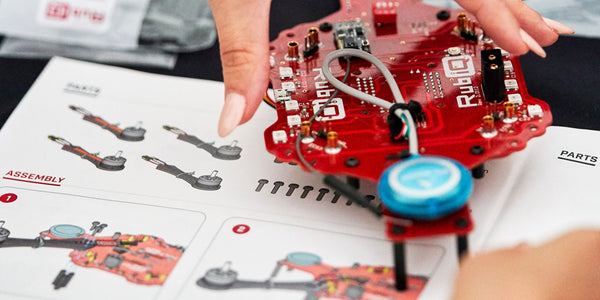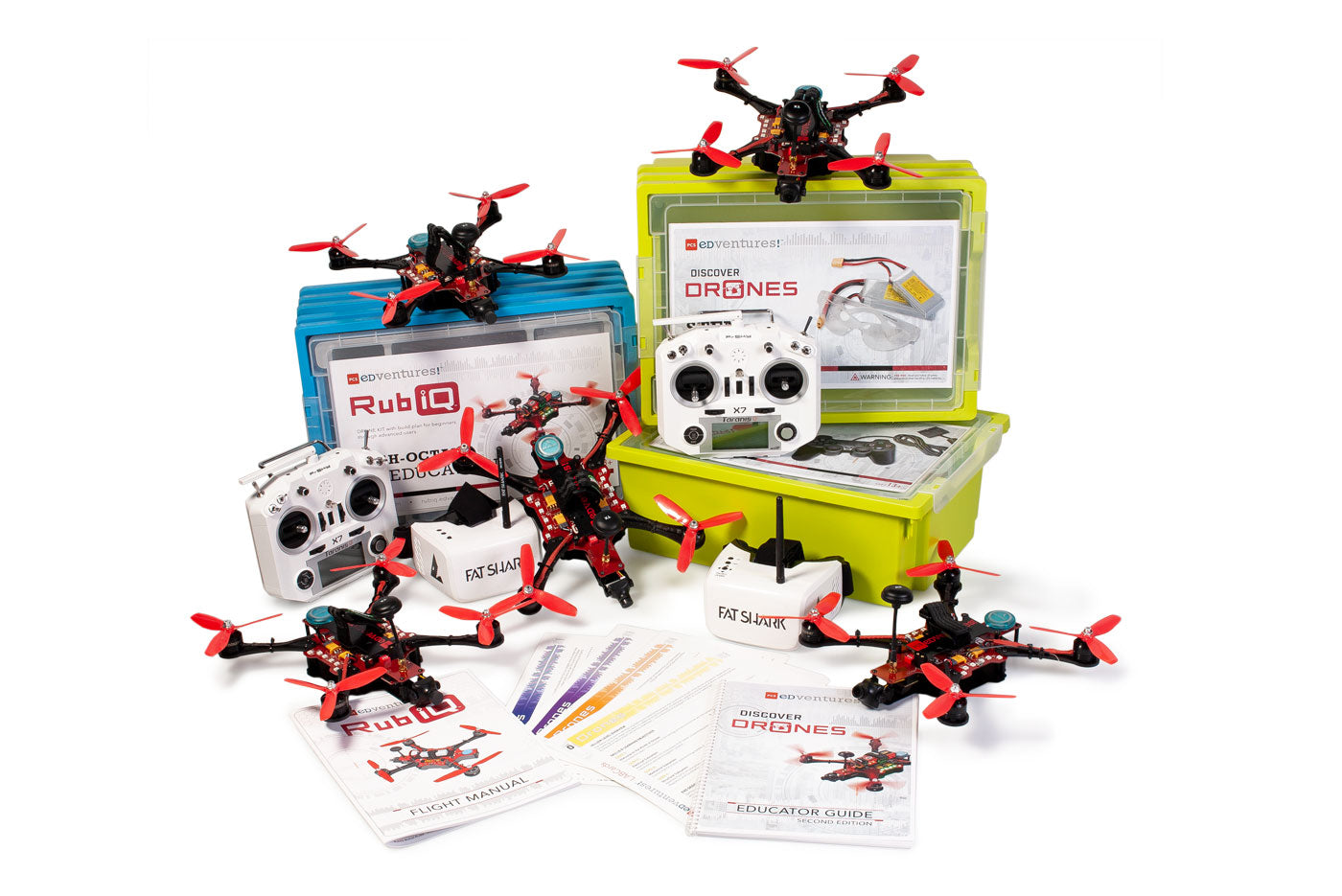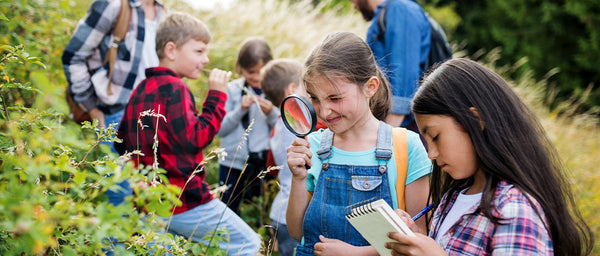
Drones and Hands-On STEM Education
Let’s pretend for a minute that it’s time to bring your car in for its yearly maintenance, and you’re trying to choose between two repair shops. At the first shop, you speak with a grease-covered mechanic who tells you about how she got started in the business. From learning as a youngster in her father’s garage to formal technical education, she seems like an ideal mechanic, but just in case, you also speak with the owner of the second shop. The second mechanic is just as friendly and eager to work on your car, and his story is just as revealing as the first mechanic’s. He’s had a formal education and spent years studying vehicles and engines. Now, while he’s only had limited hands-on experience with cars before, he has sat through every lecture, achieved top marks and knows he’s the right person for the job, his degree even says so.
Now, which mechanic would you choose to work on your car?
It might be an obvious choice for you in this scenario, but the root question has only recently become a fixture in modern education — what place does hands-on learning have in the classroom?In the story, both mechanics received similar educations, and both were confident in their abilities, so why would you choose the first mechanic to work on your vehicle? Because that mechanic had done it before — they had hands-on experience, and that makes all the difference.
The Fundamental Benefits of Hands-On Learning
Hands-on learning in the classroom is a little more complicated than what’s spelled out above, but the results of introducing hands-on learning strategies are just as distinct. Students who learn-by-doing are better, smarter learners.

Retention: Patch the Holes
Not everyone learns in the same way, and since Aristotle, educators have been debating the best way to instruct their learners. We know that every student learns differently, but when you compare different teaching styles, research shows that students only retain about 5% of material presented through lectures and less than 30% of content taught by demonstration. When utilizing hands-on learning methods, students show up to a 75% retention rate.
When you hand the reins over to students and actively put the material in their hands, you’re shaking up the traditional educator model by offering both auditory-and-visual learners and kinesthetic learners an opportunity to learn in the way that best benefits them, at the same time. With hands-on education, students can observe the lesson from the traditional student lens while also tangibly manipulating and interacting with it.
Engagement: Delete the Snooze Button
We’ve all been there. A warm lecture hall, a post-lunch lesson, a monotone professor… even thinking about it makes you sleepy. It’s no secret that when students aren’t engaged in a lesson, they let their minds wander, distract other students, with some even taking the opportunity to catch up on a few Zs. With lessons keyed in on full sensory stimulation, you’re able to eliminate these opportunities for student disengagement. If a learner is moving, if they are actively participating in the lesson through hands-on engagement, then they can’t tune you out.
With this type of active learning, lessons that combine actions that require movement, talking and listening, you’re also increasing the areas of the student brain being used at a given time, boosting learning and retention. "The more parts of your brain you use, the more likely you are to retain information," says Judy Dodge, author of 25 Quick Formative Assessments for a Differentiated Classroom. "If you're only listening, you're only activating one part of the brain, but if you're drawing and explaining to a peer, then you're making connections in the brain" (Cleaver, S).
By taking a lesson from lecture to hands-on instruction, you’re ensuring students are more actively engaged in the content, in the classroom, with their peers and with their education. Even something as simple as getting learners out of their desks can have an immense impact on learning.
There’s a lot of emerging research surrounding the advent of physical movement and its impact on the brain — for more information on exactly how movement impacts learning, check out our Physical Fitness, the Brain and Active Learning in the Classroom blog.

Critical Connections: On the Job Training
One of the most crucial benefits of hands-on learning is its ability to build problem-solving skills in students. With a curriculum that sets learners in an environment which fosters peer development, you’re allowing students to confer with one another and with yourself, allowing them to actively develop their problem-solving skills in a group environment. By having students tackle these problems through their own trial and error, you’re better equipping them with the tools needed to excel in future learning and career environments.
Along with bolstering problem-solving skills, hands-on lessons challenge students to increase their critical thinking abilities. Through this learn-by-doing approach, learners are in charge of their progress as the curriculum challenges them to make the decisions on what to do next to receive the outcome they want. By helping students develop these critical thinking and problem-solving skills, you’re also helping increase their retention of the material — instead of only studying for tests and forgetting the information once it’s time to move onto a new lesson, hands-on lessons give opportunities for learners to build essential, life-long connections to the curriculum, impacting future career opportunities not only through their knowledge of the material, but through their essential mastering of critical thinking and problem-solving skills.
Variety: The Spice of Learning
It might sound a little cliche, but hands-on learning just makes lessons more fun for both the instructor and the student. When a classroom is fully engaged and eager to learn, there’s no room for goofing-off — it’s just the instructor, the material and the pupil. Mix in an environment that requires students to get moving, one which changes up materials and learning platforms and challenges learners to problem solve, and you’ve changed your classroom from an area of instruction to a place of guided discovery. When students are in charge of their own learning, they’re likely to retain more information, pay better attention and foster learning with their peers.
One of the ways that hands-on learning best challenges the traditional learning models are through its use of multiple learning platforms. To get a better idea of how it’s done, let’s look at the PCS Edventures premiere modular UAV package, Discover Drones.
How-to: Hands-On Learning with Modular Drones

As a build-from-the-ground-up program, Discover Drones first challenges students to build their drone. While assembling the modular quadcopter in stages, they are then also responsible for online learning through the PCS drone school, Droneology. These lessons are short and sweet, combining videos and quick quizzes to help guide learners towards a complete drone education. Along with building the drone, students are responsible for fully configuring their drone through open-source software.
With a fully functioning drone, learners are also challenged to practice their flight skills through an online flight simulator. From handheld LABcards and group work to individualized online lessons and training, Discover Drones gets students up and moving with materials they are actually interested in, allowing instructors to naturally foster a hands-on learning environment with this plug-and-play STEM solution.
Helping Students Become Better Learners
As a group of lifelong educators, PCS Edventures knows how much value comes with a program that quickly and efficiently effects change within the classroom. We know that with the right tools, any environment can become a learning cornucopia, providing students with exactly what they need to move head-first into the subjects that interest them. As a tool that engages students in new ways, offering vocational pathways and hands-on training, it’s no secret why Discover Drones is being adopted by educators across the country.
By introducing a program which challenges learners to build, configure and train with drones, you’re helping them make crucial connections to the STEM careers of the future. With hands-on drone curriculum, learners are adding lifelong tools to their belt, tools which will help them better succeed in emerging technologies and educational and vocational pathways.
Educators across the nation are achieving incredible success by introducing drones to their students. They’ve ditched the lecture in favor of putting emerging STEM material in their learner’s hands, and students are loving it! With a hands-on drone program, these teachers are helping students retain more information, stay engaged longer and build critical skills needed to excel in emerging markets. Just like with the mechanics, isn’t it time you went with the obvious choice? How will you help your students become their best learners?

Curious about drone programming?
View the Discover Drones as an Instructional Platform webinar recording, where our expert panel of drone teachers, trainers and administrators discuss how to successfully use drones as an educational platform.
To learn more about bringing Discover Drones to your learners or to speak with a STEM Program Specialist, contact sales@edventures.com, call 800-429-3110 or visit the product page here.
If you’re interested in learning about or attending any intro or advanced drone professional development courses,
head over to the PCS Edventures’ Training Institute
References
Chen, C. (2017, April 7). Hands-on Learning Benefits. Retrieved August 13, 2018, from https://demmelearning.com/learning-blog/hands-on-learning-benefits/
Cleaver, S. (2018). Hands-On Is Minds-On. Retrieved August 13, 2018, from http://www.scholastic.com/browse/article.jsp?id=3751901
MicroTek. (2017, November 20). 7 Benefits of Incorporating Hands-On-Learning into Your Classroom Training. Retrieved August 13, 2018, from https://blog.mclabs.com/7-benefits-of-incorporating-hands-on-learning-into-your-classroom-training
Universities Colleges and Schools.com. (2018, April 29). Top 5 Benefits of a Hands-on Learning Approach. Retrieved August 13, 2018, from https://www.universities-colleges-schools.com/top-5-benefits-of-a-hands-on-learning-approach










